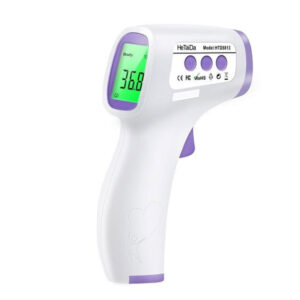An enlarged prostate, also known as benign prostatic hyperplasia (BPH), is a condition that tends to occur in men and usually develops with ageing. Though this condition is noncancerous, it painfully attempts to disrupt the quality of life. Fortunately, medical science has discovered methods of controlling this condition and has made its treatments easily available —from medication to surgery. Early treatment can help prevent complications and address symptoms, which include difficulties with urination.
Let’s discuss the key treatment options for an enlarged prostate, which include medications, minimally invasive procedures, and surgery.
Enlarged Prostate Medications
Medicines form the usual first line of treatment for an enlarged prostate. These might ease symptoms and prevent the condition from getting worse. The commonly used medicines include:
- Alpha-blockers – These help relax the smooth muscles of the bladder and prostate, which helps with urination. They are usually prescribed for patients with mild to moderate symptoms.
- 5-Alpha Reductase Inhibitors – These drugs help the prostate shrink over time by reducing the synthesis of dihydrotestosterone (DHT)—a hormone that causes prostate size to grow.
- Combination Therapy – More severe cases are treated with a combination of 5-alpha reductase inhibitors and alpha-blockers to manage the symptoms.
Pharmacological therapies are not too efficient for people with mild to moderate symptoms. They may require long-term usage and take a few weeks to show results. It is important to consult a reliable healthcare provider to ascertain the most suitable treatment.
Less Invasive Procedures
Minimally invasive procedures are very effective for patients who do not respond to medical treatment or show moderate to severe symptoms. These treatments work at the root cause of the symptoms and, while less invasive than surgery, help provide relief without the need for complex surgical procedures. Among the common minimally invasive alternatives for enlarged prostate treatment include:
Transurethral resection of the prostate (TURP) – This treatment helps remove excess tissue of the prostate that interferes with urine flow. It is done by inserting a small scope into the urethra. This treatment is known for precision and requires minimal recovery time.
Urolift – This is a relatively new treatment where the enlarged prostate tissue is lifted and held away from the urethra to enhance the flow of urine without cutting or removing tissue.
Laser therapy – Laser treatment is another common treatment where high-energy lasers are used to remove excess prostate tissue. This is preferably used in patients looking forward to fast recovery with minimal bleeding.
Minimally invasive treatments are usually effective in reducing symptoms and improving the quality of life. They are also known for their short recovery period compared to open surgery, which appeals to patients.
Surgical Options for Severe Cases
If the medications and other minimum-invasive treatments do not give relief, then surgery is the preferred option. The surgical interventions are more invasive than the medications, but they can provide permanent relief to patients with severe symptoms. Surgical procedures are advised for severe symptoms, with the following being the most common options:
Prostatectomy – This procedure involves the surgical removal of part or all of the prostate gland and is typically advised for cases where the prostate is considerably enlarged or when other treatments have proven ineffective.
Holmium Laser Enucleation of the Prostate (HoLEP) – It is an advanced laser surgery where obstructive prostate tissue is removed to restore urine flow and facilitate long-term relief in many patients.
Transurethral Incision of the Prostate (TUIP) – It involves making several small incisions in the prostate without removing any tissue. It is different from TURP, as it only reduces pressure on the urethra without removing the prostate tissue. TUIP is less invasive and typically results in fewer complications than TURP.
Surgical procedures can help relieve symptoms and improve the quality of life for patients diagnosed with an enlarged prostate. However, they come with greater risks and longer recovery times. It’s important to consult a specialist to determine the most suitable course of action based on individual circumstances.
Consulting a Specialist
The effective treatment of an enlarged prostate depends on the severity of symptoms and the preference of the patient. For professional consultation and personalised treatment, it is advisable to consult renowned hospitals like the BLK Max Super Speciality Hospital—well-known for providing advanced urological services. Their experienced team of specialists offers diverse treatment options—from medication management to the latest surgical procedures. By combining advanced technology with a patient-centric approach, the hospital delivers customised solutions to address each patient’s specific condition.
Know more about : Things To Know About Prostate Cancer
Conclusion
An enlarged prostate can significantly disrupt a person’s lifestyle. Fortunately, there are various treatment options available for men with Benign prostatic hyperplasia (BPH). From medications to minimally invasive procedures and surgical treatments, there is always a suitable treatment to relieve symptoms and enhance the quality of life.













+ There are no comments
Add yours